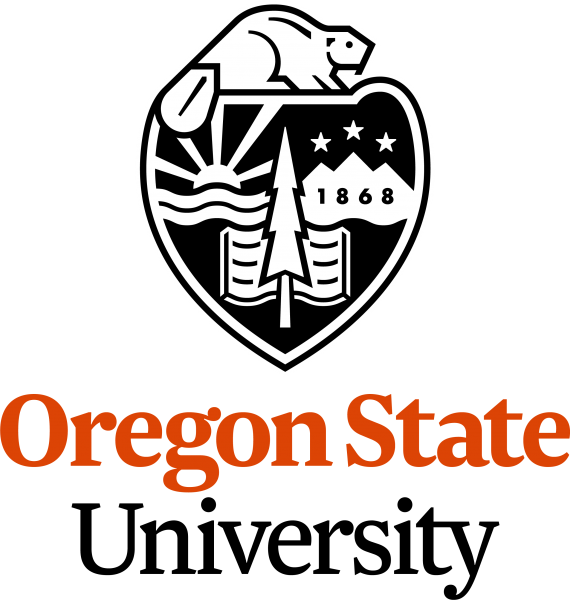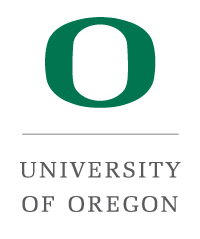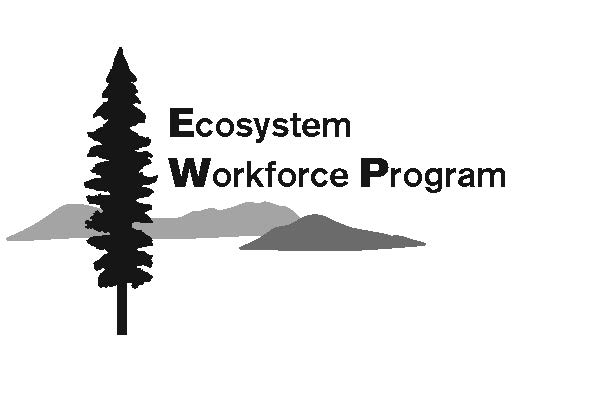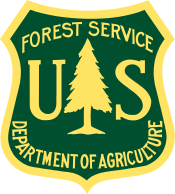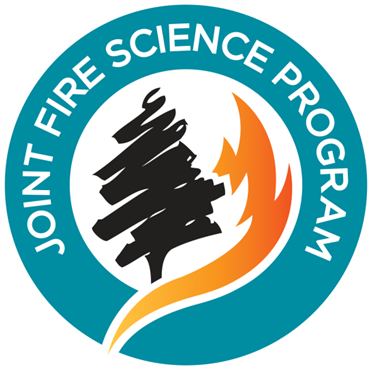InciWeb Articles WA
Three Phases of Wildfire Recovery (Norse Peak/American Fires BAER Burned Area Emergency Response)
THREE PHASES OF WILDFIRE RECOVERY There are three phases of recovery following wildfires on federal lands: Fire Suppression Repair Emergency Stabilization-Burned Area Emergency Response (BAER) Long-Term Recovery and Restoration Fire Suppression Repair is a series of immediate post-fire actions taken to repair damages and minimize potential soil erosion and impacts resulting from fire suppression activities and usually begins before the fire is contained, and before the demobilization of an Incident Management Team. This work repairs the hand and dozer fire lines, roads, trails, staging areas, safety zones, and drop points used during fire suppression efforts. Emergency Stabilization-Burned Area Emergency Response (BAER) is a rapid assessment of burned watersheds by a BAER team to identify imminent post-wildfire threats to human life and safety, property, and critical natural or cultural resources on National Forest System lands and take immediate actions to implement...
Forest Service BAER Program Overview (Norse Peak/American Fires BAER Burned Area Emergency Response)
Forest Service BAER Program Overview The Burned Area Emergency Response (BAER) program is designed to identify and manage potential risks to resources on National Forest System lands and reduce these threats through appropriate emergency measures to protect human life and safety, property, and critical natural or cultural resources. BAER is an emergency program for stabilization work that involves time-critical activities to be completed before the first damaging storm event to meet program objectives: BAER Objectives: Determine whether imminent post-wildfire threats to human life and safety, property, and critical natural or cultural resources on National Forest System lands exist and take immediate actions, as appropriate, to manage the unacceptable risks. If emergency conditions are identified, mitigate significant threats to health, safety, human life, property and values-at-risk. Prescribe emergency response actions to stabilize and prevent unacceptable degradation to...
Forest Service BAER Program Overview (Norse Peak/American Fires BAER Burned Area Emergency Response)
Forest Service BAER Program Overview The Burned Area Emergency Response (BAER) program is designed to identify and manage potential risks to resources on National Forest System lands and reduce these threats through appropriate emergency measures to protect human life and safety, property, and critical natural or cultural resources. BAER is an emergency program for stabilization work that involves time-critical activities to be completed before the first damaging storm event to meet program objectives: BAER Objectives: Determine whether imminent post-wildfire threats to human life and safety, property, and critical natural or cultural resources on National Forest System lands exist and take immediate actions, as appropriate, to manage the unacceptable risks. If emergency conditions are identified, mitigate significant threats to health, safety, human life, property and values-at-risk. Prescribe emergency response actions to stabilize and prevent unacceptable degradation to...
Diamond Creek October 11 (Diamond Creek Fire Wildfire)
While Diamond Creek Fire is not out, the potential for significant perimeter growth is limited. Future written updates will occur as conditions change sufficiently to warrant notification. Photographs taken late last week during a flight over the fire show both the mosaic of burned area as well as smoke from consumption of unburned vegetation, which continues within the fire perimeter: http://bit.ly/2xv6xfP and http://bit.ly/2yfjzNJ. Suppression Repair: Much of the suppression repair work is complete. Crews are preparing to spread grass seed on contingency lines constructed during the fire and road grading will begin soon in areas that have been too dry to grade.. Closures: Closure details are online at: http://bit.ly/2yXg10l. The following changes to closures have been made to allow additional access to areas deemed safe for entry: Eightmile road closure will be moved to just past the Copper Glance Trail which will effectively open the Copper Glance trail.The road closure at...
Diamond Creek October 11 (Diamond Creek Fire Wildfire)
While Diamond Creek Fire is not out, the potential for significant perimeter growth is limited. Future written updates will occur as conditions change sufficiently to warrant notification. Photographs taken late last week during a flight over the fire show both the mosaic of burned area as well as smoke from consumption of unburned vegetation, which continues within the fire perimeter: http://bit.ly/2xv6xfP and http://bit.ly/2yfjzNJ. Suppression Repair: Much of the suppression repair work is complete. Crews are preparing to spread grass seed on contingency lines constructed during the fire and road grading will begin soon in areas that have been too dry to grade.. Closures: Closure details are online at: http://bit.ly/2yXg10l. The following changes to closures have been made to allow additional access to areas deemed safe for entry: Eightmile road closure will be moved to just past the Copper Glance Trail which will effectively open the Copper Glance trail.The road closure at...
Preparing for Rainstorms (2017 Central Washington BAER Burned Area Emergency Response)
Wildfire increases the potential for flooding, mud and debris flows that could affect campgrounds, fish habitat, homes, structures, roads, and other infrastructure within, adjacent to, and downstream from the burned area. Fall weather events in Central Washington can bring heavy rain storms or rain-on-snow events. Residents and visitors should remain alert to possible flooding when traveling along roads downstream from the burned areas of the recent Central Washington wildfires. Central Washington Burned Area Emergency Response (BAER) team is working with the Okanogan-Wenatchee National Forest to assess the condition of watersheds that were burned in the throughout the summer. The BAER assessment team identifies potential emergency threats to critical values-atrisk, and recommends emergency stabilization response actions that are implemented on federal lands to reduce potential threats. One of the BAER strategies is interagency coordination with local cooperators who assist affected...
Safety Protocol for Flood Hazarads (2017 Central Washington BAER Burned Area Emergency Response)
It is important that residents and visitors take steps to protect themselves and their property from potential flooding and debris flows. Residents need to monitor local weather reports and public safety bulletins, local road closures, emergency notifications, weather alerts, follow local county and city advisories, and act accordingly. Use a “weather radio” or smart phone “weather app” that monitors “all hazards” alerts issued by the NOAA-National Weather Service: http://www.nws.noaa.gov/nwr/ Be proactive for predicated rainstorms by being prepared to evacuate if county or city emergency officials determine that flooding and debris flows are expected which could pose an increased threat to human life, safety, and property. Practice evacuations before real events occur. Know and be alert to environmental signs of dangerous weather conditions and be prepared to take action that can save lives. Understand that all drainages within and downstream of the burned area may...
Preparing for Rainstorms (2017 Central Washington BAER Burned Area Emergency Response)
Wildfire increases the potential for flooding, mud and debris flows that could affect campgrounds, fish habitat, homes, structures, roads, and other infrastructure within, adjacent to, and downstream from the burned area. Fall weather events in Central Washington can bring heavy rain storms or rain-on-snow events. Residents and visitors should remain alert to possible flooding when traveling along roads downstream from the burned areas of the recent Central Washington wildfires. Central Washington Burned Area Emergency Response (BAER) team is working with the Okanogan-Wenatchee National Forest to assess the condition of watersheds that were burned in the throughout the summer. The BAER assessment team identifies potential emergency threats to critical values-atrisk, and recommends emergency stabilization response actions that are implemented on federal lands to reduce potential threats. One of the BAER strategies is interagency coordination with local cooperators who assist affected...
Safety Protocol for Flood Hazarads (2017 Central Washington BAER Burned Area Emergency Response)
It is important that residents and visitors take steps to protect themselves and their property from potential flooding and debris flows. Residents need to monitor local weather reports and public safety bulletins, local road closures, emergency notifications, weather alerts, follow local county and city advisories, and act accordingly. Use a “weather radio” or smart phone “weather app” that monitors “all hazards” alerts issued by the NOAA-National Weather Service: http://www.nws.noaa.gov/nwr/ Be proactive for predicated rainstorms by being prepared to evacuate if county or city emergency officials determine that flooding and debris flows are expected which could pose an increased threat to human life, safety, and property. Practice evacuations before real events occur. Know and be alert to environmental signs of dangerous weather conditions and be prepared to take action that can save lives. Understand that all drainages within and downstream of the burned area may...
BAER Limitations (2017 Central Washington BAER Burned Area Emergency Response)
While many wildfires cause minimal damage to the land and pose few threats to the land or people downstream, some fires result in damage that requires special efforts to reduce impacts afterwards. Loss of vegetation exposes soil to erosion; water run-off may increase and cause flooding, soil and rocks may move downstream and damage property or fill reservoirs putting community water supplies and endangered species at-risk. The Burned Area Emergency Response (BAER) program is designed to identify potential risks to resources and to reduce these threats through appropriate treatments through its goals of protecting life, property, water quality, and ecosystems. BAER is an emergency program for stabilization work that involves time-critical activities to be completed before the first damaging event to meet program objectives. BAER Objectives Determine whether imminent post-wildfire threats to human life and safety, property, and critical natural or cultural resources on National Forest...
BAER Limitations (2017 Central Washington BAER Burned Area Emergency Response)
While many wildfires cause minimal damage to the land and pose few threats to the land or people downstream, some fires result in damage that requires special efforts to reduce impacts afterwards. Loss of vegetation exposes soil to erosion; water run-off may increase and cause flooding, soil and rocks may move downstream and damage property or fill reservoirs putting community water supplies and endangered species at-risk. The Burned Area Emergency Response (BAER) program is designed to identify potential risks to resources and to reduce these threats through appropriate treatments through its goals of protecting life, property, water quality, and ecosystems. BAER is an emergency program for stabilization work that involves time-critical activities to be completed before the first damaging event to meet program objectives. BAER Objectives Determine whether imminent post-wildfire threats to human life and safety, property, and critical natural or cultural resources on National Forest...
Three Phases of Wildfire Recovery (2017 Central Washington BAER Burned Area Emergency Response)
There are three phases of recovery following wildfires on federal lands: • Fire Suppression Repair • Emergency Stabilization-Burned Area Emergency Response (BAER) • Long-Term Recovery and Restoration Fire Suppression Repair is a series of immediate post-fire actions taken to repair damages and minimize potential soil erosion and impacts resulting from fire suppression activities and usually begins before the fire is contained, and before the demobilization of an Incident Management Team. This work repairs the hand and dozer fire lines, roads, trails, staging areas, safety zones, and drop points used during fire suppression efforts. Emergency Stabilization-Burned Area Emergency Response (BAER) is a rapid assessment of burned watersheds by a BAER team to identify imminent post-wildfire threats to human life and safety, property, and critical natural or cultural resources on National Forest System lands and take immediate actions to implement emergency stabilization measures...
Three Phases of Wildfire Recovery (2017 Central Washington BAER Burned Area Emergency Response)
There are three phases of recovery following wildfires on federal lands: • Fire Suppression Repair • Emergency Stabilization-Burned Area Emergency Response (BAER) • Long-Term Recovery and Restoration Fire Suppression Repair is a series of immediate post-fire actions taken to repair damages and minimize potential soil erosion and impacts resulting from fire suppression activities and usually begins before the fire is contained, and before the demobilization of an Incident Management Team. This work repairs the hand and dozer fire lines, roads, trails, staging areas, safety zones, and drop points used during fire suppression efforts. Emergency Stabilization-Burned Area Emergency Response (BAER) is a rapid assessment of burned watersheds by a BAER team to identify imminent post-wildfire threats to human life and safety, property, and critical natural or cultural resources on National Forest System lands and take immediate actions to implement emergency stabilization measures...
Forest Service BAER program overview (2017 Central Washington BAER Burned Area Emergency Response)
The Burned Area Emergency Response (BAER) program is designed to identify and manage potential risks to resources on National Forest System lands and reduce these threats through appropriate emergency measures to protect human life and safety, property, and critical natural or cultural resources. BAER is an emergency program for stabilization work that involves time-critical activities to be completed before the first damaging storm event to meet program objectives. BAER OBJECTIVES Determine whether imminent post-wildfire threats to human life and safety, property, and critical natural or cultural resources on National Forest System lands exist, and take immediate actions, as appropriate, to manage the unacceptable risks. If emergency conditions are identified, mitigate potential threats to health, safety, human life, property and values-at-risk. Prescribe emergency response actions to stabilize and prevent unacceptable degradation to natural and cultural resources, to minimize...
Forest Service BAER program overview (2017 Central Washington BAER Burned Area Emergency Response)
The Burned Area Emergency Response (BAER) program is designed to identify and manage potential risks to resources on National Forest System lands and reduce these threats through appropriate emergency measures to protect human life and safety, property, and critical natural or cultural resources. BAER is an emergency program for stabilization work that involves time-critical activities to be completed before the first damaging storm event to meet program objectives. BAER OBJECTIVES Determine whether imminent post-wildfire threats to human life and safety, property, and critical natural or cultural resources on National Forest System lands exist, and take immediate actions, as appropriate, to manage the unacceptable risks. If emergency conditions are identified, mitigate potential threats to health, safety, human life, property and values-at-risk. Prescribe emergency response actions to stabilize and prevent unacceptable degradation to natural and cultural resources, to minimize...
Diamond Creek October 4 (Diamond Creek Fire Wildfire)
While Diamond Creek Fire is not out, the potential for significant perimeter growth is limited. Future written updates will occur as conditions change sufficiently to warrant notification. Last night’s infrared flight showed very little fire growth and only small pockets of scattered heat. Firefighters continue to monitor fire activity.Suppression Repair: Suppression repair of the contingency line south of the fire area is ongoing. Local resource advisors continue to identify suppression repair needs and evaluate work as it is completed. A Burned Area Emergency Response (BAER) Team, with local emergency management, forest hydrologists, soil scientists, and others; are assessing the potential for future flooding or debris flows on public lands affected by the fire. That team will identify areas of concern and provide recommendations for mitigation. For more on BAER efforts visit http://centralwashingtonfirerecovery.info/ Closures: Closure details are online at:...
Diamond Creek October 4 (Diamond Creek Fire Wildfire)
While Diamond Creek Fire is not out, the potential for significant perimeter growth is limited. Future written updates will occur as conditions change sufficiently to warrant notification. Last night’s infrared flight showed very little fire growth and only small pockets of scattered heat. Firefighters continue to monitor fire activity.Suppression Repair: Suppression repair of the contingency line south of the fire area is ongoing. Local resource advisors continue to identify suppression repair needs and evaluate work as it is completed. A Burned Area Emergency Response (BAER) Team, with local emergency management, forest hydrologists, soil scientists, and others; are assessing the potential for future flooding or debris flows on public lands affected by the fire. That team will identify areas of concern and provide recommendations for mitigation. For more on BAER efforts visit http://centralwashingtonfirerecovery.info/ Closures: Closure details are online at:...
Forest Service ORDER NO. 06-17-03-17-1031 Update October 03, 2107 (Jolly Mountain Fire Wildfire)
UNITED STATES DEPARTMENT OF AGRICULTURE FOREST SERVICE OKANOGAN WENATCHEE NATIONAL FOREST CLE ELUM RANGER DISTRICT ORDER NO. 06-17-03-17-1031 JOLLY MOUNTAIN FIRE CLOSURE Pursuant to 16 USC § 551 and 36 CFR § 261.50 (a) and (b), and to provide for public safety, the following acts are prohibited on National Forest System (NFS) Lands, Roads, and Trails within the Cle Elum Ranger District on the Okanogan-Wenatchee National Forest as described below and shown in Exhibit A.. This Order supersedes order 06-17-03-17-1012 dated August 31, 2017, and is effective until April 1, 2018, unless rescinded, which ever is earlier. PROHIBITION: 1. Entering into or being upon National Forest System lands within the Closure Area which are closed for public health and safety as described below, and displayed in Exhibit A. [36 CFR § 261.53(e)] 2. Being on any National Forest System road, as described below, and displayed in Exhibit A. [36 CFR § 261.54(e)] 3. Being on any National Forest...
Forest Service ORDER NO. 06-17-03-17-1031 Update October 03, 2107 (Jolly Mountain Fire Wildfire)
UNITED STATES DEPARTMENT OF AGRICULTURE FOREST SERVICE OKANOGAN WENATCHEE NATIONAL FOREST CLE ELUM RANGER DISTRICT ORDER NO. 06-17-03-17-1031 JOLLY MOUNTAIN FIRE CLOSURE Pursuant to 16 USC § 551 and 36 CFR § 261.50 (a) and (b), and to provide for public safety, the following acts are prohibited on National Forest System (NFS) Lands, Roads, and Trails within the Cle Elum Ranger District on the Okanogan-Wenatchee National Forest as described below and shown in Exhibit A.. This Order supersedes order 06-17-03-17-1012 dated August 31, 2017, and is effective until April 1, 2018, unless rescinded, which ever is earlier. PROHIBITION: 1. Entering into or being upon National Forest System lands within the Closure Area which are closed for public health and safety as described below, and displayed in Exhibit A. [36 CFR § 261.53(e)] 2. Being on any National Forest System road, as described below, and displayed in Exhibit A. [36 CFR § 261.54(e)] 3. Being on any National Forest...
Diamond Creek October 3 (Diamond Creek Fire Wildfire)
Location: 11 miles NNW of Mazama, WA Total Personnel: 19 Acres: 128,272 total acres Cause: Under Investigation Containment: 85% Start Date: July 23, 2017 Note: The containment reflects the percent of operational objectives completed. Local resources continue suppression repair of Diamond Creek FireCurrent Activities: Yesterday was the last operational period for heavy equipment work. Local resources are continuing suppression repair of the contingency line south of the fire area. As with previous operational periods, resource advisors will continue evaluation of the remaining suppression repair activities. Air and ground resources will continue to monitor fire activity.Over the coming days and weeks, the Forest will be completing Burned Area Emergency Response (BAER) assessments. Together with local emergency management, Forest hydrologists, soil scientists, and others; experts will be assessing the potential for future flooding or debris flow on public lands affected by the fire....
